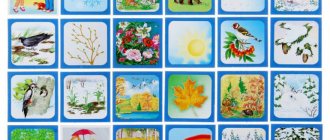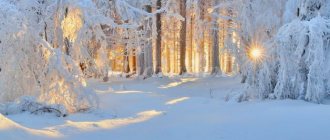Who is first?
Nature has created separate “schedules” for various animals to organize for the winter.
Some forest dwellers begin to prudently think about cold weather not in late or early autumn (like other animals). They carry out procurement work already in the summer.
In what order do different mammals come up with the idea of preparatory activities? Rodents - wood mice, chipmunks and gophers - think about winter before others. And also boibaks (inhabitants of the “borderland” of the green area - the so-called forest-steppe). After them, fellow hamsters come into play, carrying tasty reserves in their mouths from September 1st. Squirrels (part of the same zoological community) act only at the height of Pushkin's time.
The next category of inhabitants of fragrant green thickets is the hedgehog family. They also don’t wait until the 12th month, trying to finish the important matters mentioned already in the 10th or 11th.
Only after the rest of the inhabitants of the dense tree stand do predators and the hare remember the upcoming frost and the accompanying hunger. Some are not going to work at all in winter. Better sleep.
Let's talk about how animals prepare for winter, revealing the nuances of the work of 4 zoo families.
Presentation “How do animals prepare for winter?”
#1st grade #2nd grade #3rd grade #4th grade #The world around us #Educational materials #Presentation #Subject teacher #Primary school teacher #School education
"How animals prepare for winter"
How do animals prepare for winter? In summer, animals wear light fur coats, but they will not save them from the winter cold. This is why animals molt in the fall. Molting in animals is a gradual change of fur. Instead of summer wool, a new one grows in the fall - thick, fluffy. In summer the squirrel is red, and in winter it is gray.
Change the color of their coats The white hare is gray in summer and white in winter. The ermine's fur in summer is reddish-brown on the back and sides, and yellowish-white on the chest and belly. In winter, all the fur is pure white, only the tip of the tail remains black. This is very important for the animals. They will be invisible in the snow in winter.
Change the color of their coats In summer, lynxes have shorter fur, with a reddish tint. In winter it is longer, thicker and its shade is light gray.
Store food for the winter Some animals store food for the winter. Squirrels hide acorns, nuts, and mushrooms in secluded places. Beavers prepare a lot of branches, carry them under water and put them in a heap near their home. Mice store acorns, nuts, and grains in their burrows.
Hibernate There are some animals that sleep all winter. They do not need a supply of food. The hedgehog makes a small nest in a hole on the ground from dry leaves, grass, and moss. In it he hibernates until spring.
They hibernate. You can say that the hedgehog and the bear are “storekeepers”. In summer and autumn they feed intensively and gain fat. They use up fat in the winter as a natural supply of food.
They hibernate. By winter, the badger becomes very fat, drags a lot of leaves into its burrow and stores a large supply of food. Bats prefer attics and abandoned buildings for hibernation. They gather in hundreds and hang next to each other.
Hibernate Frogs, toads, snakes, and lizards hibernate for the winter. Some frogs overwinter at the bottom of reservoirs. They breathe through their skin.
They do not store for the winter. The hare, wolf, fox, otter, wolverine, elk, and wild boar do not store for the winter. They will find food for themselves anyway.
Migratory birds In autumn, food becomes increasingly scarce. Insects disappear, herbaceous plants wither. In winter, many birds would not be able to find food at all. At the end of summer and autumn they fly to warmer climes.
Birds are preparing for winter. Autumn in the forest. No bird songs can be heard. The jay buries acorns for reserve. He chooses the ripest ones, but often forgets about them, and in the spring young oak trees grow from these acorns.
Departure of birds Insectivorous birds fly away first. (September-October) Later, grain-eating birds fly away, and then marsh and aquatic birds. Swifts are among the first to fly away. Swift
How birds fly Cranes fly in a wedge Herons and geese fly in a line
Migration of birds Starlings, blackbirds and other small birds fly in a crowded flock. Some fly during the day (storks, cranes, birds of prey, swallows, swifts), and others at night (flycatchers, warblers, wagtails), and some fly and walk. For example, corncrake
Flight of birds The bird road is far and full of dangers. A lot of birds die during flights. Only the strongest, the most enduring make it to warmer regions.
Guess the riddles: Guess the riddles: 1. In summer he walks without a road near pine and birch trees, and in winter he sleeps in a den, hiding his nose from the frost.
2. You and I recognize the animal 2. You and I recognize the animal By these two signs: He is wearing a gray fur coat in the winter, And he is wearing a red fur coat in the summer.
3. And who is white in winter, 3. And who is white in winter, and gray in summer?
4.Touching the grass with his hooves, 4.Touching the grass with his hooves, A handsome man walks through the forest, Walks boldly and easily, with his horns spread wide.
How squirrels and beavers prepare for winter
Squirrels live in hollows - deep voids located in tree trunks. And at a high altitude. For protection from arrogant predators. Amazingly agile owners of ears with tassels put nuts and other delicacies that they love so much there. Acorns, mushrooms and a variety of seeds are also good for nutrition.
Among the toothy ones, God awarded the beavers with the most powerful oral incisors. And so they quickly and skillfully build housing (it is always on the water - the forest itself floats into their teeth). And beavers live in large families. Therefore, they are able to build both a classic (summer) hut and winter (insulated) “apartments”. The food warehouse in the “January towns” is a pile of small branches and roots of aquatic flora. It remains to add that the dams are thoroughly strengthened closer to frost. Repairs are underway.
Hibernation of Arctic ground squirrel, prairie dog and bear
Arctic green squirrel
But the hibernation of the ground squirrel, prairie dog and bear is not considered hibernation. You can call this a "nap" as they can be easily woken up. Yes, all the vital functions of their body also slow down, but at the level of ordinary sleep. It is clear that fat and food reserves are the key to the survival of these animals during hibernation. A bear can consume up to 20,000 calories in one day and accumulate about 15 cm of fat over the summer. It would seem that what could disturb him in winter?
For example, the appearance of bear cubs and caring for them. Ground squirrels are probably afraid to oversleep in the spring. They wake up to touch the earthen plug that closes the entrance to the hole in order to determine from the temperature of the plug whether spring has come.
Preparing hedgehogs
Animals can carry supplies for the winter directly on their backs (without using their limbs, but using needles). And the conversation, as you guessed, is about hedgehogs. Seeing “fallen” apples and high-calorie “forest meat” (mushrooms), these cunning creatures turn into a particularly prickly ball and roll over their finds. They literally pin them on their backs.
But it’s not only the food listed that hardworking hedgehogs bring to their winter nests. In the cold, they are not averse to pampering themselves with fat caterpillars, suddenly numb (at the sight of a ball rolling on them) toads and mice. You just need to collect all this yummy stuff in the fall - before it’s under the ice.
Yes, yes - a harmless-looking hedgehog is actually a predator. Then, when he sees someone smaller. By the way, it eats snakes, worms and generally anything that crawls. Many died. Take it - I don’t want it.
But that's not all. The animal is so picky in terms of comfort that it also rebuilds its housing. In order not to tremble and toss and turn in the next 3 months. Insulates the ground nest with dry leaves, makes an orthopedic mattress useful for the spine - it carries pliable but elastic forest moss.
Real sleepyheads!
How else do animals prepare for winter? Some careless animals fully justify their name by going into hibernation for the winter. Mother Nature has decreed it in such a way that these sloths do not even bother themselves with worries about their daily bread. Really, why? After all, you can just go into hibernation! Who are these little lazy creatures? Yes, it's Sony! Small rodents similar to squirrels. They live mainly in European forests, for which they are nicknamed forest dormouses.
Before the onset of cold weather, forest dormouse begin to noticeably gain weight. They get fatter until they weigh a couple of times more than usual and look like a small fur bag. These creatures sleep in spherical nests, made by them specifically for wintering. At least they are active in some way! Zoologists are touched by the sight of a sleeping forest dormouse: the rodent curls up into a very tight ball, pressing its nose and small paws to its abdomen. At the same time, the fluffy tail, in a semi-ring, covers almost the entire body of the animal.
How does a hare prepare for winter?
Some preparation of animals for winter consists only of changing the spring-summer wardrobe to a much warmer winter one. As soon as deep snow falls on the ground, it’s time for the scythe to change his clothes. By that time, the last shreds of his summer coat had already left his timid little body (our great-grandfathers dubbed this process “molting”).
But at the same time new fur grows. Dense and fluffy. Able to retain as much heat generated in the body as possible. Between its VILLS (“vols”, “lint” or “bors” - fur in old languages). However, in order for the warmth itself to be born inside the animal, it needs to eat well. In cold weather, the hare gnaws the bark of trees, because he does not know where to carry supplies (“he does not have a registration - he runs back and forth all year long”). Winter wool is a camouflage robe. White. Try to find it.
How do hamsters prepare for winter?
Winter time in the northern regions is perhaps the most stressful and important time in the life of small rodents. To avoid starvation and cold death, many small animals stock up on significant supplies of food. For example, the common hamster, which lives in the steppes of Western Siberia and Europe, prepares for winter in the following way: during the fall, the rodent gains several kilograms (!) of selected grains and root crops. He does this diligently and docilely: the hamster spends his days transporting crops from the fields to his “bins,” dragging the grains in his cheek pouches.
Preparing bears for cold weather
The bear, on the contrary, has already chosen housing. It will be difficult to get him out of there. Only with the help of the bark of a hunting dog or the poke of a large pike. The original Slavic-Baltic-Germanic name of the beast sounded like “ber”. He is preparing for the “white season” in November. He finds a hole, which he turns into a “log” (“log” in the original translation “place of lying”). That is why, although we already call the giant himself “honey” (“knowing about honey”), we still designate his hibernation place as “ber loga.”
Loga is a direct synonym for the word “log”; it is a natural excavation in the ground (pit). It is precisely these cavities that clubbed couch potatoes equip for their winter bedroom, lining the walls with moss, branches, leaves or dead coniferous trees (if we are talking only about the taiga). Where's the food? Already inside himself. In a state of suspended animation, the bear sucks its paw, through special pores of which fat penetrates. And it was carefully accumulated from April to October inclusive.
Finally, I would like to summarize. Some predators (wolves, foxes, lynxes) are busy hunting (and, in fact, searching for food) even in December, January and February. All preparation for the snow season, for example, for a fox, consists of changing its skin (like a hare, it changes it to a warmer one). The bear does not need food supplies (they are inside him).
Why is this happening? Predators are not afraid of anyone and create shelters only for the period of breeding. The exception is the fox, which sometimes hides in holes from specially trained hunting dogs. However, even many cowardly representatives of the fauna do not like winter shelters. The hare, for example, relies on its legs. And, on the contrary, the bear, which seems to be the most fearless, hides in a den. Not for fear of being eaten! Because of the fear of the cold, which could kill in a dream. Animals are divided into thrifty, sleeping and changing fur.
Nutrient reserves for the winter
Many species of animals store food supplies for the winter. Mice and hamsters, voles and other rodents collect crops. Squirrels collect mushrooms, acorns and nuts. Chipmunks store pine nuts and seeds for the winter. Rodents such as haymakers store haystacks for the winter, in which various herbs are collected and neatly folded.
Predatory animals also store food for the winter. Stoats and weasels collect 2-3 dozen mice in their holes. Black hories store large numbers of frogs. For food, the minks prepare themselves several kilograms of different fish. Bears, wolverines and martens hide food in tree branches, rocks and burrows, depending on their wintering areas.
All representatives of the animal world prepare for the onset of frost in the fall. Some accumulate fat and fall into prolonged sleep, others store food in minks, and still others change the cold climate to a warm and favorable one. Each species of fauna has its own adaptations that allow them to adapt to harsh conditions and survive.







